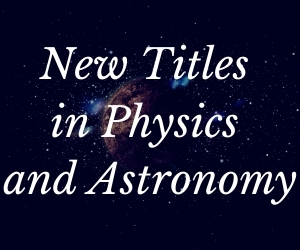System Upgrade on Tue, May 28th, 2024 at 2am (EDT)
Existing users will be able to log into the site and access content. However, E-commerce and registration of new users may not be available for up to 12 hours.For online purchase, please visit us again. Contact us at customercare@wspc.com for any enquiries.
This collection of papers provides a broad view of the development of Lorentz and Poincaré invariance and spacetime symmetry throughout the past 100 years. The issues explored in these papers include: (1) formulations of relativity theories in which the speed of light is not a universal constant but which are consistent with the four-dimensional symmetry of the Lorentz and Poincaré groups and with experimental results, (2) analyses and discussions by Reichenbach concerning the concepts of simultaneity and physical time from a philosophical point of view, and (3) results achieved by the union of the relativity and quantum theories, marking the beginnings of quantum electrodynamics and relativistic quantum mechanics.
Ten of the fundamental experiments testing special relativity are also discussed, showing that they actually support a four-dimensional spacetime based on broad Lorentz and Poincaré invariance which is more general than and includes the special theory of relativity. The generalization of the concepts of simultaneity, physical time and the nature of the speed of light within a four-dimensional spacetime framework leads to the conclusion that the symmetries embodied by the special theory of relativity can be realized using only a single postulate — the principle of relativity for physical laws.
Contents:
- Theoretical Implications of Lorentz and Poincaré Invariance: The Dawn of Lorentz and Poincaré Invariance (1887–1905)
- Inquiries Regarding the Constancy of the Speed of Light (1908-1910)
- The Splendid Union of Special Relativity and Quantum Mechanics (1927–1949)
- The Isotropy of the Speed of Light c: A Convenient Assumption (1963–1995)
- The Logically Simplest Theory of Relativity and Its 4-Dimensional Symmetry (1990–1994)
- Experiments for Lorentz and Poincaré Invariance:
- The Fizeau Experiment
- The Wilson–Wilson Experiment
- The Observation of the Muon Lifetime Dilation
- The Mass–Velocity Relation Experiment
- The Thomas Precession Experiment
- and other papers
Readership: Upper-level undergraduates, graduate students, researchers and academics in mathematical physics and theoretical physics.





























